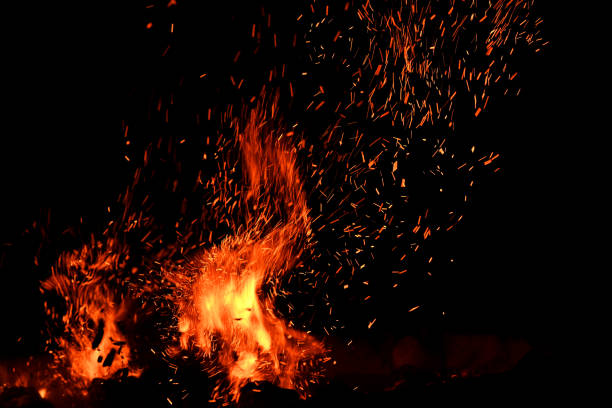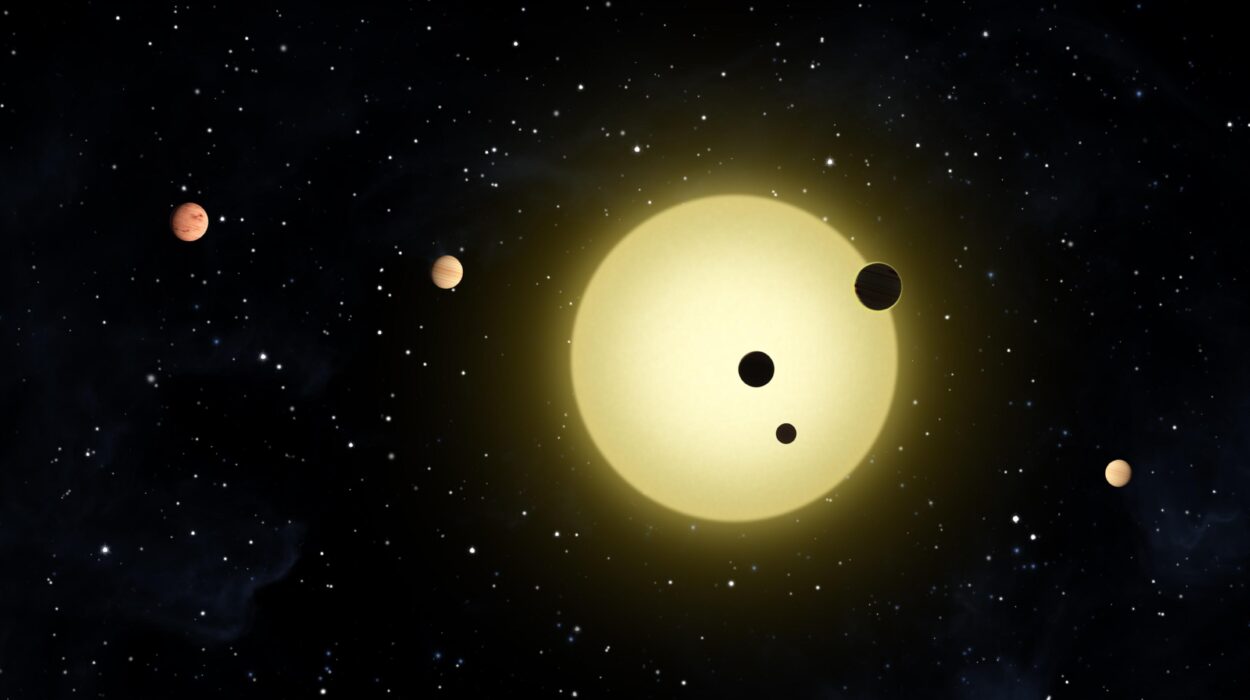Fire has fascinated humanity since the dawn of civilization. Its flickering light and transformative power have inspired myth, art, and science alike. There is something hypnotic in the way flames move—graceful yet destructive, chaotic yet patterned. Yet behind this dance of light lies a precise, intricate physics that governs every flicker, crackle, and flare. Understanding fire is not merely about chemistry or thermodynamics; it is about energy, motion, and the subtle interplay between matter and radiation. Flames are more than visual spectacle—they are the visible signature of a cascade of physical processes that convert matter into energy in real time.
From campfires to candle flames, from roaring infernos to the controlled combustion engines that power modern society, fire operates under the same fundamental laws. At its core, a flame is the manifestation of a chemical reaction called combustion—a complex sequence of oxidation reactions that release energy in the form of heat and light. But to appreciate the true physics of fire, one must look beyond the surface glow and examine the hidden mechanics of particles, fluid flow, and energy transfer.
Combustion: The Heart of Fire
At the simplest level, fire is born when fuel reacts with an oxidizer, most commonly oxygen in the air. But combustion is far from a trivial process. It involves intricate chemical kinetics, heat transport, and fluid dynamics. A flame is not a uniform entity; it is a structured system with distinct zones, each defined by temperature, chemical composition, and energy flow.
In a typical hydrocarbon flame, the process begins when the fuel molecules gain enough energy to overcome the activation barrier for reaction. Heat from an external source—like a spark—excites the molecules, breaking chemical bonds and producing reactive intermediates called radicals. These radicals, including hydroxyl (OH), hydrogen (H), and oxygen (O) atoms, propagate the reaction chain, sustaining the flame. Once initiated, the flame becomes self-propagating, feeding off the continuous supply of fuel and oxygen.
The flame itself is stratified. Closest to the fuel source is the unburned zone, where fuel molecules are vaporized but not yet ignited. This is followed by the reaction zone, where radicals collide, bonds break, and energy is released. Farther from the fuel is the luminous zone, where soot particles heated to incandescence emit the familiar golden glow of a candle or wood fire. Beyond this lies the non-luminous zone, often blue in color, where combustion is most complete and temperatures are highest. Each zone represents a balance between chemical reactions, heat conduction, and convective flows of gas.
Heat, Light, and the Spectrum of Fire
A flame is a natural laboratory of energy transformation. As molecules react, chemical potential energy is converted into heat and light. The heat raises the temperature of surrounding gases, causing them to expand and rise in buoyant plumes. This upward motion, familiar to anyone who has watched smoke curl from a fire, is governed by fluid dynamics. Hot gases are less dense than the surrounding air, creating a vertical flow that sustains the flame and draws in fresh oxygen—a process known as convection.
The light emitted by flames is equally revealing. Blue flames, common in natural gas stoves, indicate near-complete combustion, where molecular fragments release energy primarily through electronic transitions. Yellow or orange flames arise from incandescent soot particles, microscopic carbon fragments heated to thousands of degrees. These glowing particles radiate across a broad spectrum, creating the warm light that has illuminated human dwellings for millennia. In a sense, every flame is a dynamic emitter, a constantly shifting spectrum of energy revealing the physics of particle motion and radiation.
Fire is also an example of non-equilibrium thermodynamics. Unlike many natural systems that settle into a stable equilibrium, flames exist in a delicate, self-organized state far from equilibrium. They maintain a dynamic balance between energy input, chemical reactions, and heat dissipation. Any significant disruption—removing fuel, introducing excess oxygen, or cooling the flame—can quench this balance, causing the fire to extinguish. Understanding this delicate interplay is crucial in disciplines ranging from combustion engineering to fire safety science.
Fluid Dynamics of Flames
Beyond chemistry, the shape and behavior of flames are governed by fluid dynamics. Flames are not rigid structures; they are flowing, evolving entities. Hot gases rise due to buoyancy, drawing cooler air from the surroundings. This flow can create turbulence, causing the flame to flicker and dance. The smooth, steady flame of a candle differs radically from the chaotic tongues of a wildfire, largely due to differences in flow, fuel distribution, and environmental conditions.
Turbulent combustion is particularly complex. In wildfires, the rising hot air creates vortices and eddies, which mix fuel and oxygen at microscopic scales. This turbulence increases reaction rates, allowing the fire to spread rapidly. Similarly, in engines or industrial burners, controlling turbulent flow is key to efficient and clean combustion. Flames, in this sense, are living structures, their shapes molded by the invisible currents of air and heat around them.
The interaction between flames and their environment also illustrates feedback loops. Rising hot gases draw in oxygen, which intensifies combustion, producing more heat, which enhances the flow, and so on. This self-reinforcing cycle explains why fires can grow explosively when fuel and oxygen are abundant. Conversely, obstructing the flow of air or applying a cooling agent interrupts this feedback, suppressing the fire. Fluid dynamics, therefore, is not merely descriptive—it is predictive, offering insight into controlling and understanding fire.
The Role of Soot and Particulates
Not all flames are created equal. A key factor in flame color and luminosity is the formation of soot, composed of tiny carbon particles. Incomplete combustion leads to soot formation, which absorbs energy from chemical reactions and radiates it as visible light. The result is the characteristic yellow-orange hue of a wood flame. Blue flames, by contrast, indicate minimal soot, as the combustion is more complete.
Soot formation is a delicate balance. Too much fuel without adequate oxygen produces thick, black smoke; too little fuel leads to a faint, nearly invisible flame. This interplay explains why fire management, from cooking to firefighting, requires careful regulation of both fuel supply and air flow. On a microscopic level, soot particles also play a role in heat transfer, radiating energy to surrounding gases and accelerating chemical reactions. The brilliance of a flame is, in essence, the physical signature of molecular collisions and thermal radiation.
Plasma: Fire at the Edge of Physics
In extreme cases, fire can enter a state known as plasma, a fourth state of matter beyond solid, liquid, and gas. Plasmas are ionized gases, where atoms are stripped of electrons, creating a soup of charged particles. Lightning and certain high-temperature flames, such as oxyacetylene torches, reach conditions where plasma formation occurs. Plasma emits intense light, conducts electricity, and exhibits behavior far different from ordinary flames. Studying plasma in fire provides insight into astrophysical phenomena, from stellar cores to the auroras of Earth.
Even ordinary flames flirt with plasma physics on a microscopic scale. In the hottest regions of a flame, electrons can be temporarily excited or freed, contributing to ionization and affecting the propagation of the combustion reaction. This subtle plasma-like behavior adds another layer of complexity to understanding fire. Flames are thus not merely chemical reactions—they are dynamic, multi-phase, energy-rich systems at the interface of chemistry, fluid mechanics, and electromagnetism.
Fire in Nature and Civilization
The physics of fire is inseparable from its role in nature and human culture. Lightning strikes ignite forest fires, converting stored biomass into heat and light while shaping ecosystems. Wildfires are governed by the same principles of combustion, fluid dynamics, and energy transfer observed in controlled flames, but on scales that challenge prediction and control.
Human use of fire—from cooking to metallurgy to engines—represents applied mastery of these principles. Controlled combustion powers internal combustion engines, gas turbines, and industrial furnaces. Engineers manipulate flame shape, temperature, and fuel-air mixtures to optimize energy release while minimizing waste and pollution. Understanding the physics of fire is not an abstract pursuit; it is essential for modern technology, safety, and environmental management.
Yet fire retains a wild, unpredictable aspect. Even in carefully engineered systems, small changes in airflow, fuel quality, or temperature can dramatically alter flame behavior. This unpredictability is a reminder of the underlying complexity, the chaotic dynamics inherent in any system far from equilibrium. Flames are, simultaneously, both a tool and a force of nature beyond complete human control.
Fire, Energy, and Entropy
Fire offers a vivid illustration of energy conversion and entropy, two fundamental concepts in physics. In combustion, chemical potential energy stored in molecular bonds is transformed into heat, light, and kinetic energy of gases. Entropy increases as the structured molecules of fuel are broken into simpler molecules like carbon dioxide and water vapor. The flame, therefore, is a microcosm of the universal drive toward energy redistribution and disorder.
In engines and industrial processes, understanding this conversion is critical. The efficiency of combustion depends on how much of the chemical energy can be harnessed as useful work versus how much is lost as heat or radiation. The physics of fire, in this context, is not merely academic—it has tangible implications for energy production, climate, and the sustainability of human society.
The Emotional and Symbolic Power of Fire
Beyond its scientific complexity, fire captivates the human imagination. Its light dispels darkness, its warmth sustains life, and its destructive power commands respect. Artists, poets, and philosophers have long recognized fire as a symbol of transformation, passion, and renewal. Yet the physical principles behind these emotional responses are rooted in thermodynamics, fluid mechanics, and radiation physics. The flicker of a candle, the roar of a hearth, the spiral of flames in a bonfire—all are manifestations of energy, motion, and matter interacting according to the immutable laws of nature.
The connection between the physics and the experience of fire is profound. Understanding the molecular dance, the convection currents, and the radiant energy enhances our appreciation of its beauty. Flames are not merely aesthetic; they are windows into the fundamental processes that govern energy and matter in the universe. To watch fire is, in a sense, to witness physics in motion, visible to the naked eye.
Conclusion: Fire as a Window into Nature
Fire is far more than a chemical reaction. It is a dynamic system, a convergence of physics, chemistry, and fluid mechanics. It is a natural laboratory where energy, matter, and motion interact in endlessly fascinating ways. From the simplest candle flame to the most violent wildfire, the principles of combustion, heat transfer, fluid dynamics, and radiation reveal the underlying order in what appears to be chaos.
To study fire is to explore the interplay of matter and energy, the balance between order and disorder, and the interface between human control and natural forces. It is to witness one of nature’s most elegant dances, a spectacle governed by laws as precise as they are beautiful. Flames illuminate more than our surroundings—they illuminate the principles of the universe itself, revealing the physics that underpins both the mundane and the extraordinary.
Fire, in all its complexity, continues to inspire awe. Its light is a message from the molecular world, a radiant signature of energy in motion. To understand it is to glimpse the hidden workings of nature, to connect with forces that have shaped life, civilization, and the cosmos itself. In the flicker of a flame, we see not only heat and light, but the exquisite physics that animates the universe.






